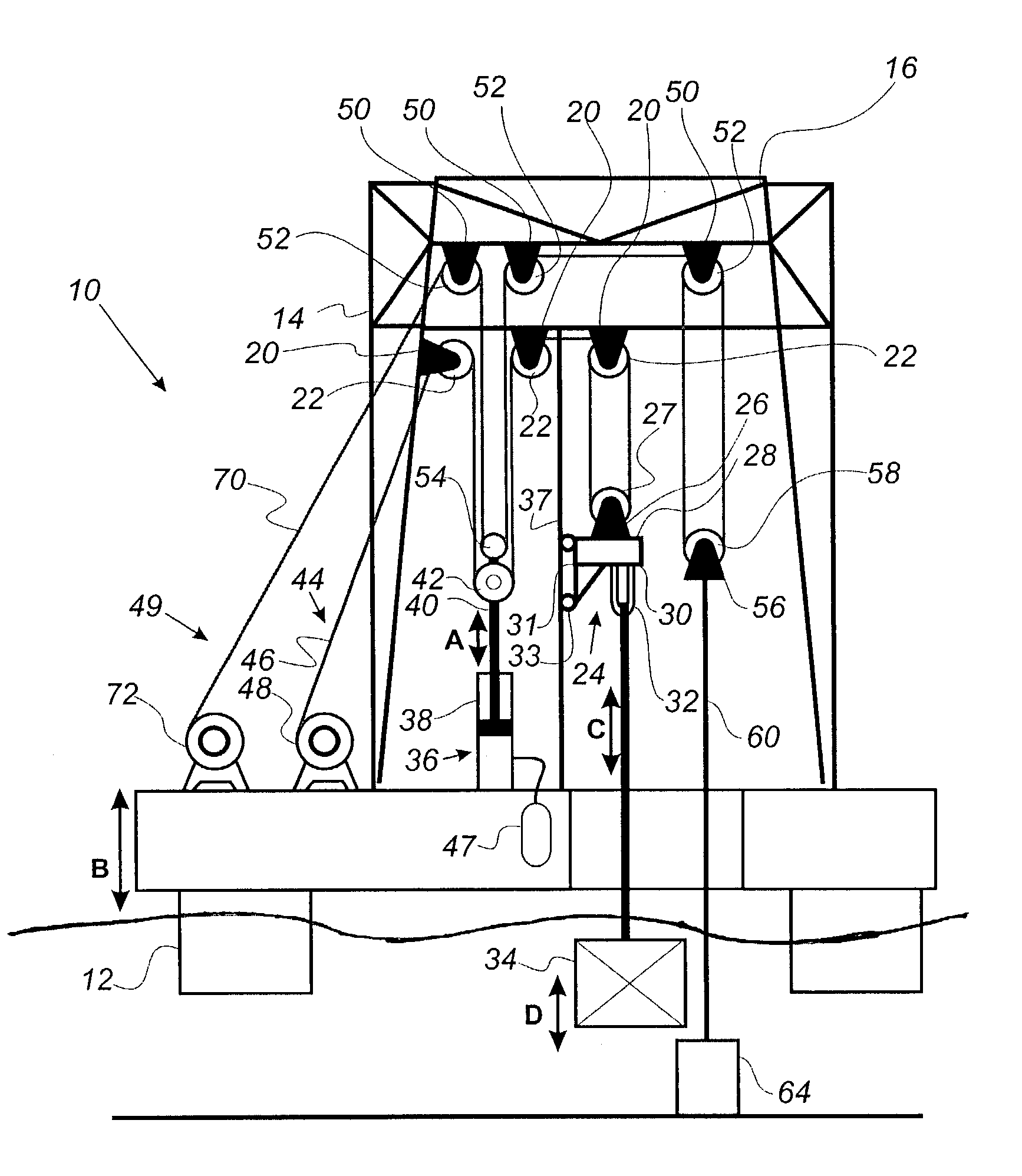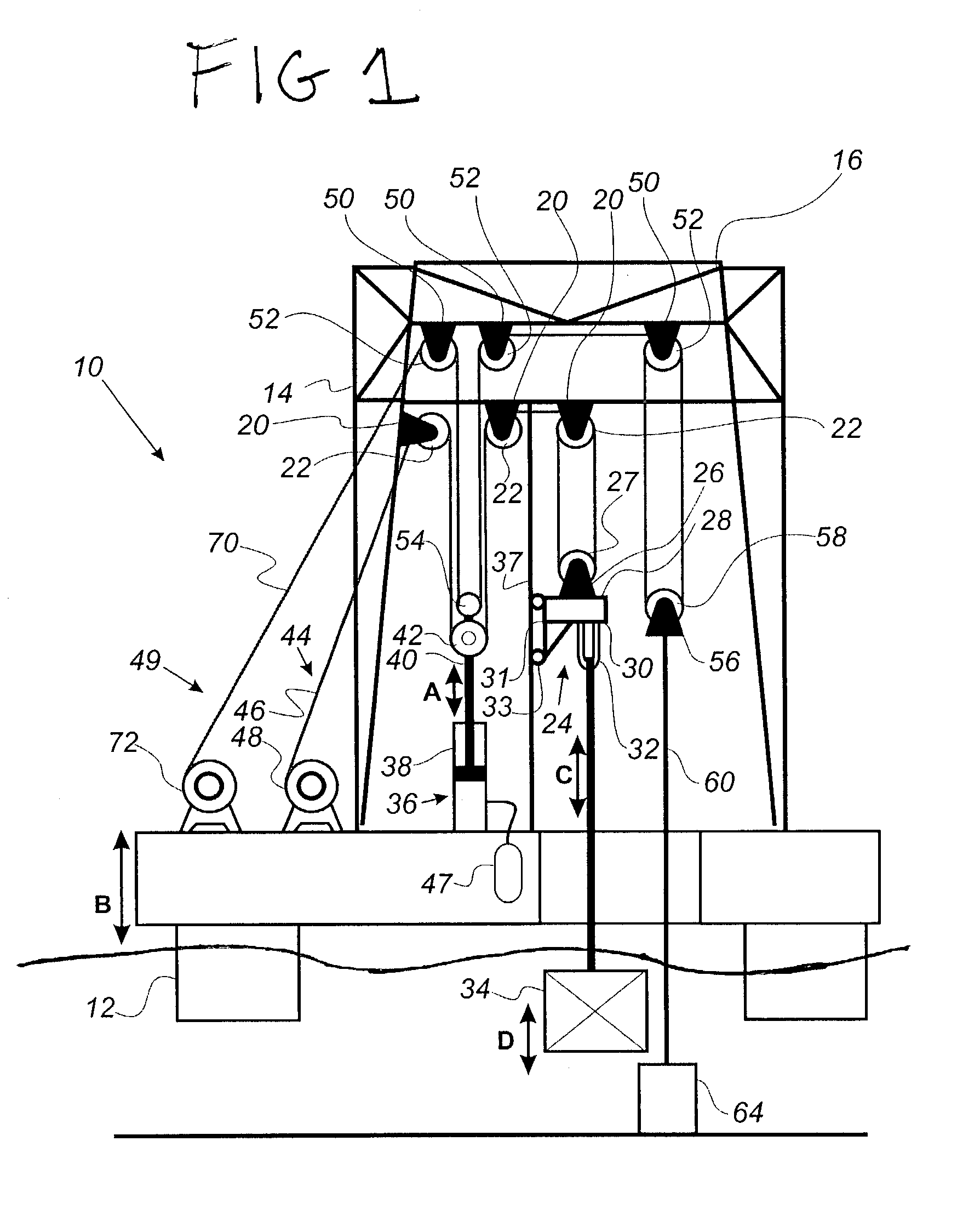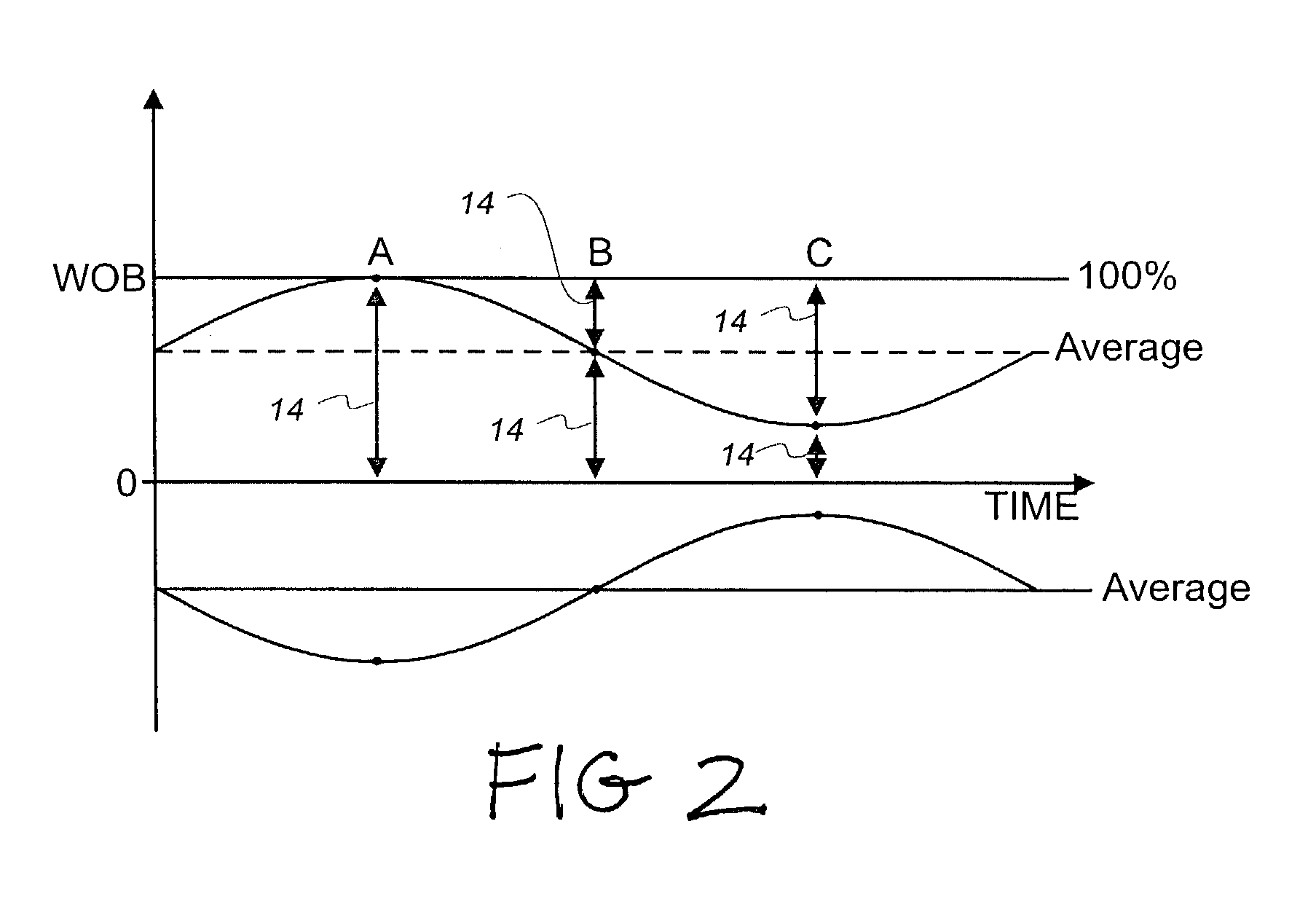Compensation and hoisting apparatus
a hoisting device and compensating technology, applied in the field of hoisting devices, can solve the problems of deformation of the drill collar, undue stress of the joint and possible failure, and the desire value of the hoisting bit to be maintained at the desired valu
- Summary
- Abstract
- Description
- Claims
- Application Information
AI Technical Summary
Benefits of technology
Problems solved by technology
Method used
Image
Examples
second embodiment
[0049]FIG. 3 shows the invention. As can be seen, the connection cable (60) to the fixed reference (64) is no longer present. Instead a motion and load sensing device (82) is used to measure the tension in the hoisting cable (46) and the movement of the vessel (12).
[0050]The secondary hoisting mechanism (72) is controlled in such a way that it counteracts any movements of the vessel (12) and any unwanted tension variations of the compensator (36). Since the secondary compensator (49) is smaller than the compensator (36) the power that is needed to compensate for tension variations is also smaller. When this ratio is 0.9 the power that is needed for the second compensation system (49) is approximately 10% of the total compensation power. The remaining 90% is provided by the compensator (36). This compensator system is often a passive system which comprises an energy storage to reduce the overall power demand of the system to almost zero. The advantage of this embodiment is that the s...
third embodiment
[0051]FIG. 4 shows the hoisting device (10). This embodiment does not use a secondary hoisting mechanism (72) to compensate for the movement of the vessel or tension variations of the compensator (36) but instead uses a third compensator (80) having a first end (86) and a second end (88), which is at the second end (88) connected to pulleys (42). The compensator second end (88) is movable with respect to the first end (86) and compensator (80) is mounted on the vessel (12). A motion and load sensing device (82) is visible to detect the tension in hoisting cable (46) and / or the movement of the vessel (12) which is connected to a controller (90) to control compensator (36) by mechanism of third compensator (80).
[0052]FIG. 5 show's the hoisting device (10) in which are at least two winches, (48, 51) each end of the hoisting cable (46) being wound into a separate winch (48, 51). The winches (48, 51) are driven by a plurality of motors with low inertia. Also in this embodiment each end o...
PUM
 Login to View More
Login to View More Abstract
Description
Claims
Application Information
 Login to View More
Login to View More - R&D
- Intellectual Property
- Life Sciences
- Materials
- Tech Scout
- Unparalleled Data Quality
- Higher Quality Content
- 60% Fewer Hallucinations
Browse by: Latest US Patents, China's latest patents, Technical Efficacy Thesaurus, Application Domain, Technology Topic, Popular Technical Reports.
© 2025 PatSnap. All rights reserved.Legal|Privacy policy|Modern Slavery Act Transparency Statement|Sitemap|About US| Contact US: help@patsnap.com



